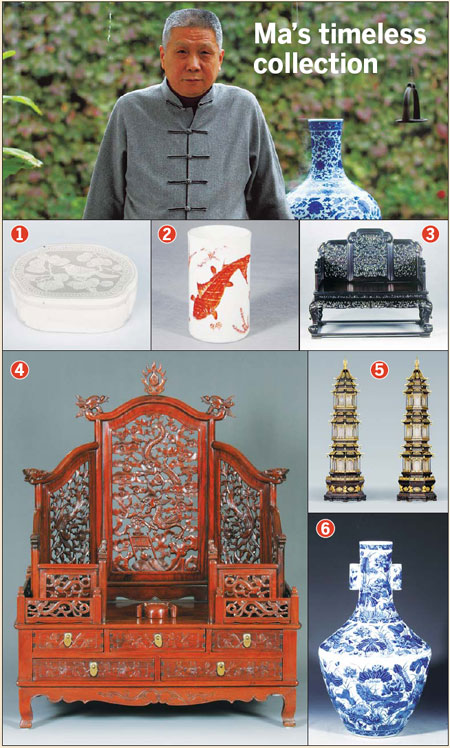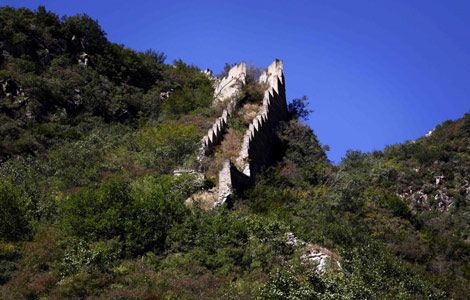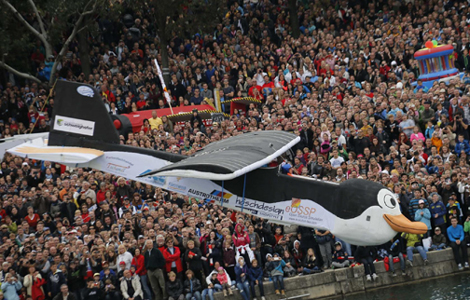Ma Weidu and his timeless collection
Updated: 2010-11-21 09:18
By Qin Zhongwei (China Daily)
|
|||||||||||
 |
|
1.Porcelain head-rest with floral and bird motifs Period: Song Dynasty (960-1279) Introduction: Ancient Chinese head-rests were first made of natural stones and later, wood, jade, bronze, bamboo and porcelain were used. Porcelain pillows remained the most common. The porcelain head-rest that Guanfu Museum collected was made in Cizhou kiln. Carved with beautiful bird and flower motifs, it was very representative of the culture, customs and social life of the Song Dynasty. 2.Porcelain pen holder with fish motifs Period: Qing, Emperor Kangxi's reign (1654-1722) Introduction: This was a necessary item on the scholar's desk and part of the "four-treasures" in the study. The pen holder was used daily, especially when calligraphy was practised every day. Emperor Kangxi, who was known as a lover of calligraphy, pushed for the production of an enormous volume of pen holders during his reign. This pen holder is 15 centimeters tall and shows three vermilion fishes chasing one another. The word for fish in Mandarin, yu, is often associated with auspicious connotations. 3.Rare rosewood five-screen throne Period: Qing, Emperor Qianlong's reign (1711-1799) Introduction: Furniture made from rosewood, or zitan in Chinese, is extremely rare and usually reserved only for the use of the emperors as the color of this slow-growing tropical hardwood is considered imperial. And this well-crafted throne is special as its four legs are all carved with elephants. 4.Fragrant rosewood dressing table with dragon and phoenix motifs Period: Ming Dynasty (1368-1644) Introduction: Huanghuali, or fragrant rosewood, is the hardwood grown mainly in the Guangdong and Hainan provinces. The timber is red and has a fragrance that the Chinese liken to incense. The antique dressing table is rare for its intricate carvings and inlaid decoration. And the patterns of the dragon (representing the king) and phoenix (the queen) show it was used for the imperial household. 5.A pair of rare rosewood seven-tiered pagodas Period: Qing Dynasty (1644-1911) Introduction: This was a gift that the Emperor Qianlong sent to his mother, who was a faithful Buddhist. It was also an expression of the emperor's filial piety. Originally there were 48 Buddhist statues placed on the pagodas, The pair of pagodas were bought at a Sotheby's auction in Hong Kong. 6.Qinghua porcelain vase decorated with lotus patterns Period: Qing, Emperor Qianlong's reign (1711-1799) Introduction: The 55.3-cm tall vase from the royal collection is very rare because of its size and its dense lotus motifs. At its broadest, it measures about 1 meter in circumference. It is also embossed with the six-character Qianlong mark and fired at Jingdezhen, the porcelain capital of China. There are only two such vases in the world, and the other is with the Palace Museum in Beijing's Forbidden City. [Photo by Zou Hong / China Daily] |











